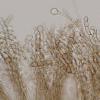
15-12-2025 15:48
 Danny Newman
Danny Newman
Melanospora cf. lagenaria on old, rotting, fallen

15-12-2025 15:54
 Johan Boonefaes
Johan Boonefaes
Unknown anamorph found on the ground in coastal sa

15-12-2025 21:11
 Hardware Tony
Hardware Tony
Small clavate hairs, negative croziers and IKI bb

15-12-2025 07:09
 Danny Newman
Danny Newman
indet. Rutstroemiaceae sp. on unk. fallen leavesMc

15-12-2025 07:05
 Danny Newman
Danny Newman
Pseudosclerococcum golindoi (det: Zotto)near Cosb

15-12-2025 11:49
 Danny Newman
Danny Newman
ITS sequences from the following two collections B

15-12-2025 12:34
 Danny Newman
Danny Newman
indet. Rhytismataceae on oak leafnear Purchase Roa

09-12-2025 12:06
 Andgelo Mombert
Andgelo Mombert
Bonjour,Je recherche l'article concernant Hypobryo
Thanks again
Mal
Hi Malcolm:
is very difficult to give an opinion with only those data. Macroscopic characteristics? Asci reaction with IKI?
Dirk, your photography is a different species, perhaps G. cookeanum.
Regards.
Sabino.
Yes Dirk, but in the typical form, the parahyses of G. cookeanum can be highly variable. G. barlae ss. orig. = G. cookeanum, see Benkert.
Regards.
Sabino.
Mal
Yes Malcolm, clearly. The interpretation of Priou (and most authors) is another species.
Sabino.
Thanks Sabino
We will have to wait until all these species are included in a new key.
Mal

my key 1992 is of course obsolete after the good job by Arauzo & Iglesias. In Errotari 2014.
When I look my plate, puff! I learned to draw after... then Zorro is arrived, pardon when Zotto is arrived
At this time, , the authors for exemple Nannfelt 1942, Maas-Geesteranus 1956 and Benkert 1976 give barlae with hooked- crozier-like paraphyses. But after 1996 Benkert synonymises it with cookeanum, we need to give a new name for the specimen with such paraphyses.
In his key Sabino brings new features to separate Geoglossum species, IIK reaction and the extern cells shape of sterile part, nethertheless , with these characters, we are often "assis entre deux chaises " French lession !
JPP
I see a lot of Geoglossum cookeanum with the paraphyses consistantly multi-septate, slight constriction at the septation, and often with capitate heads. The third cell from the apex is often elongated but I have never seen it distorted as depicted in some images of the perceived G. barlae.
Regards, Chris
Mal

JPP

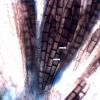
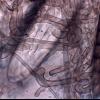
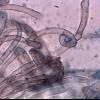


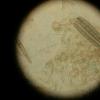
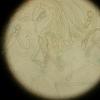
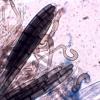

 Geoglossum barlae Benkert
Geoglossum barlae Benkert